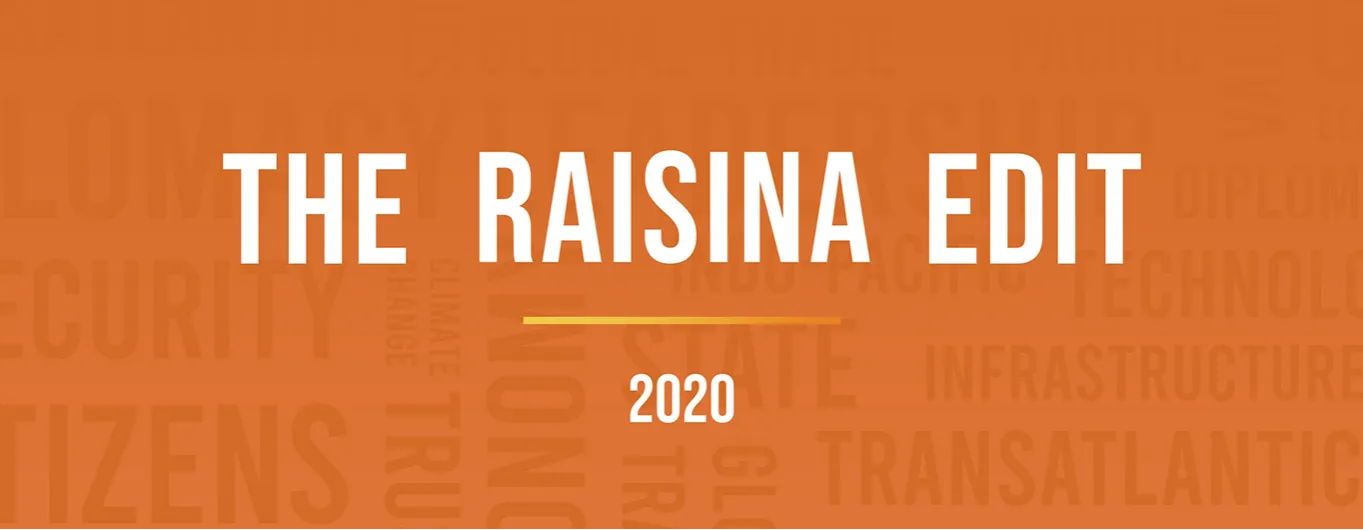
The World Trade Organization (WTO) is the outcome of the Marrakesh Agreement that, in 1994, two years after the Soviet collapse and five after the fall of the Berlin Wall, successfully concluded the Uruguay Round. It was a significant victory for multilateralism, praised as one of the pillars of the new world order and hailed as the fairest solution to the management of global trade issues. Multilateral institutions became the tools of a liberal order now led by a single, victorious hegemon, the United States.
The WTO proved to be a success in its first years. The jewel in its crown was the Dispute Settlement Board (DSB) with its associated Appellate Body (AB), a sort of trade tribunal, that was considered to be a major contribution to the rules-based international system. Initially looked at with suspicion by the major powers, which feared it would become a disguised ally of less developed countries, the DSB and the AB showed (perhaps surprisingly) balanced behaviour towards resolving complaints from different members, giving fair room to queries from all, regardless of economic clout.
Two developments were, however, relevant:
- China, a potential alternative to the global hegemon, became more visible and active in the trade realm and on December 11, 2001, was accepted as a WTO member.
- Trade issues and negotiations moved to a higher level of complexity owing to two reasons. First, ironically, the success of the late General Agreement on Tariffs and Trade and of the post-Uruguay Round years of the WTO left less room for further negotiation. Most countries had reached significant levels of openness and their margins for concessions, taking into account unavoidable domestic pressures, had substantially narrowed. Second, new forms of production, notably the global value chains phenomenon, jeopardised the reliability of trade statistics and calculations, throwing up new demands for new estimates of trade imbalances.
Slowly, these developments started to be a source of problems. The 1999 Seattle Protests, the collapse of the 2003 Cancún negotiations, and the stalled Doha Round were signs not clearly perceived. Major geopolitical events, like 9/11, the 2003 housing bubble, and the 2007-8 financial crisis, added protectionist tensions and excessive checks and controls in daily trade operations.
China’s entry into the WTO resulted in more than a nuisance for the hegemon and its allies, which started to complain about the peculiarities of the Chinese economy and their impact on trade: the emblematic example being that of Chinese state-owned enterprises.
The success of the DSB/AB was subject to criticism by both economists and trade lawyers as well. This ranged from critique of the increased legalisation and judicialisation of the trade rules and processes, to dissatisfaction with the institution as a whole.
The US realised that the multilateral trade solution it had so dearly favoured could systematically operate against its interests and risked becoming a stumbling block whenever rapid solutions were required — a perception manifest since at least President Obama’s second term.
An already debatable WTO that is unable to solve the most basic requirement for a multilateral trading organisation — dispute settlement between its members — will soon find itself irrelevant.
Since December 10, 2019, the AB has been paralysed by a lack of quorum — mostly due to the US’ persistent refusal to approve the names of its new members. An already debatable WTO that is unable to solve the most basic requirement for a multilateral trading organisation — dispute settlement between its members — will soon find itself irrelevant.
The future of multilateral trade
The answer is twofold.
First, in an interconnected world transitioning towards multipolarity, it is very hard to live without a minimally rules-based, multilaterally agreed-upon operating trade system. The present arrangement is definitely in peril, suffering persistent and increasing damage, but will somehow survive. Both the US and China, all major economies, emerging and less-developed countries — all need a basic structure for guiding their trade relations. This can act as a driving force for the survival of the existing structure.
Second, another simultaneous process will occur. The events thus far have caused deep fractures and made evident design and procedural failures. The WTO architecture as it stands today, and part of its associated features — like classical trade agreements — will experience varied changes, some quite deep. Examples abound — changes in the DSB/AB seem unavoidable, as does a potentially difficult discussion with China on its internal rules, and adaptations to new trade procedures related to new production technologies and drivers.
Combining the two will lead to a period of a cycle of apathy and chaos until a new trade order settles down. Serious disputes may begin within the realm of the WTO, but will possibly spill over to broader ties and other areas of the international system. Proposals for new institutions, risks of division of the multilateral framework into separate groups of countries — with perhaps a looser structure connecting them — and a return to more protectionist status-quos are quite possible. In fact, moving forward, we are likely to witness an increase in the ongoing protectionist wave, with ‘trade wars’ disguising multiple objectives — securing election votes; preserving domestic jobs; creating trade barriers to the flow of competitive (and oftentimes better) technology. Advanced countries like those in the EU may be squeezed by such conflicts, with considerable impacts on their domestic economies, and developing economies by losing already hard-won market access. All will lose, in one way or another.
It is hard to see smooth times ahead. Much discontent, complaints, and hidden competitive goals make peaceful negotiations unlikely for the time being. The final outcome may eventually not be too far from a (new) multilateral solution, but what that will look like is a matter of speculation.
The relevant signals
However, as the trade architecture crumbles there are relevant policy signals that can orient us towards the shape of things to come.
The first determining factor is which alliances will step forward to negotiate disputes and rearrange trade institutions.
Will the US, that has been playing solo of late, try to push through its views, mostly alone, against even classical allies like the EU? Will the EU join forces with China — a member that has been strongly supporting the multilateral card at the WTO — and try to engage key developing countries in a broad alliance, not necessarily opposed to, but autonomous from the US? How will traditional and powerful negotiators, like Brazil and India, position themselves? Will Africa emerge united in these new debates, or will its nations participate in different coalitions?
The way coalitions will be formed; the outgrowth of select pressure groups; and how interests and proposals will bring together different economies will provide key insights on the ensuing trade structure.
It is likely that both the US and China will initially try to gather allies to their sides, the former waving the flags of modernity, freedom, and security; the latter those of preservation and improvement of the existing multilateral forum. It is not clear how other countries will align themselves along these main vectors.
The second determinant is how the technology war will evolve. Which areas will remain or be included in a potential WTO 2.0, and which will be left outside, leading to the creation of new — multilateral or plurilateral — fora? Examples abound, from cyber-trade and data to new production technologies and advanced services tasks.
How will the WTO engage with other multilateral organisations in issue-specific areas, like cyber and telecommunications? How will standards — ever more crucial for the global reach of goods and services — be tackled and eventually included in a trade body? How will powerful forces at the side of the global agribusiness lobby interact with ongoing proposals — will they pledge for a separate institution? How will organised civil society groups fight for their share in final decisions?
These two factors need to be gauged and analysed to judge whether, out of current and possibly worsening disruption in global economic governance, what multilateral, rulesbased trade system emerges, if any.
Coda: A final complication
All the above will take place in a delicate geopolitical environment. The new US presidency, to be decided by the end of this year; the way the US-Iran confrontation plays out; the question of the EU’s ability to shape order for itself and around itself; political temperatures in Africa and Latin America; the merging of identity and nationalistic policies with economic development goals — all these, and more, are factors that will condition any negotiations on global trade and its governing architecture. It is likely that the trade question will occupy a second fiddle to more pressing priorities, and accordingly take more (and precious) time to reach a new equilibrium.
The views expressed above belong to the author(s). ORF research and analyses now available on Telegram! Click here to access our curated content — blogs, longforms and interviews.




 PREV
PREV



